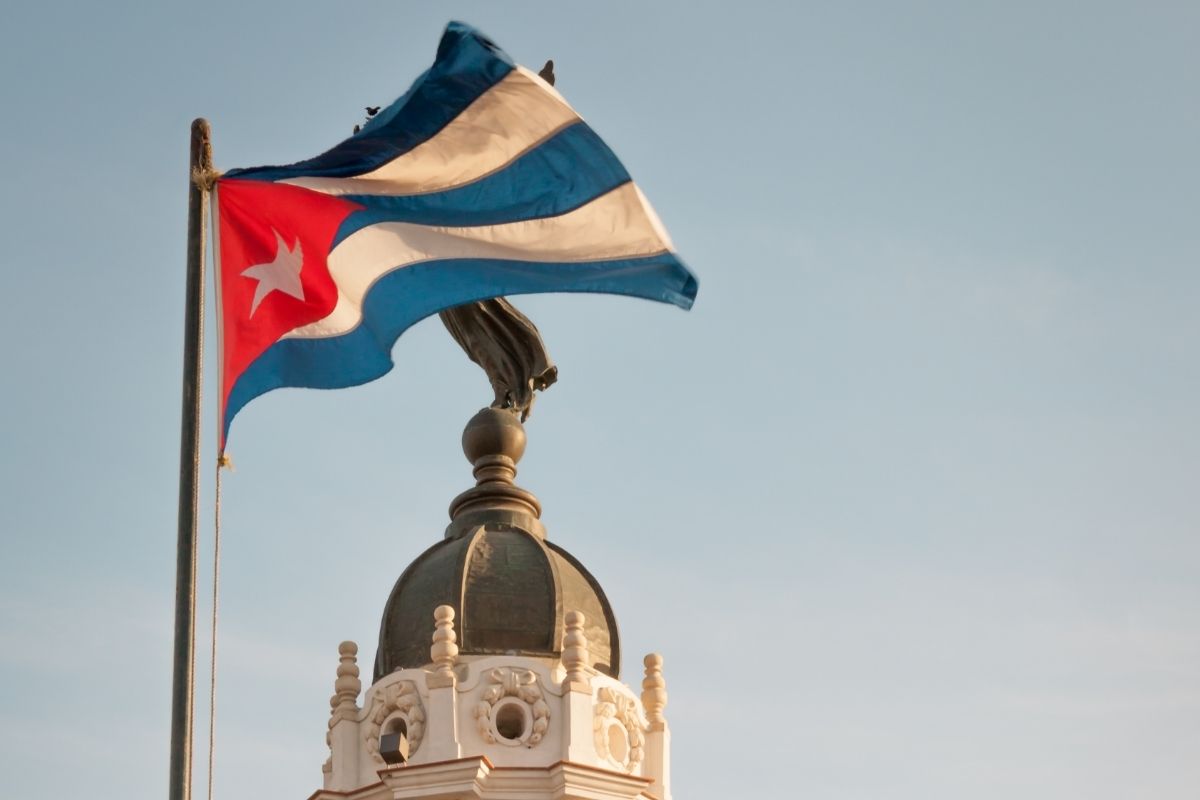Cuban poster design, a vivid blend of aesthetics and ideology, offers a fascinating look into the island’s history, culture, and politics.
Its vivid colors, inventive typography, and compelling imagery tell a story that goes beyond mere aesthetics, reaching deep into the heart of Cuban society.
This blog post will delve into the rich history of Cuban poster design, explore its unique techniques, and unpack its cultural significance.

The History of Cuban Poster Design
The story of Cuban poster design begins in the 1960s, shortly after the Cuban Revolution.
The new socialist government sought to unify the country and its people through a variety of means. One of them being visual communication. Poster design, accessible and influential, became a powerful tool for disseminating political, cultural, and social messages.
One key institution at the forefront of this movement was the Cuban Institute of Cinematographic Art and Industry (ICAIC).
Established in 1959, the ICAIC produced not only films but also a plethora of vibrant film posters. These posters, crafted by renowned designers like Eduardo Muñoz Bachs and Antonio Reboiro, were not simply promotional tools; they were artworks that combined visual beauty with political commentary.
During the 1960s and 70s, the Organization of Solidarity with the People of Asia, Africa, and Latin America (OSPAAAL), an NGO based in Havana, produced powerful political posters. These were distributed worldwide. Consequently, raising awareness and solidarity for the anti-imperialist cause.
Techniques in Cuban Poster Design
Cuban poster design is known for its ingenious blend of techniques. The silkscreen printing method was widely employed, valued for its durability, color vibrancy, and low cost. This enabled the mass production and distribution of posters, making them a common sight across Cuba.
Artistically, Cuban designers have exhibited an eclectic mix of styles. Abstract forms, surreal imagery, bold typography, and a riotous palette are characteristic features. Many posters demonstrate a profound use of symbolism, with images often encapsulating a whole narrative or idea.
For instance, Muñoz Bachs, one of the leading figures of Cuban graphic design, is celebrated for his whimsical and imaginative style. His posters often featured hand-drawn illustrations, playfully abstract forms, and ingenious use of visual metaphors.
On the other hand, Reboiro’s work is known for its stark symbolism and vibrant colors. His film posters, such as those for “Lucía” (1968) and “Memories of Underdevelopment” (1968), are iconic examples of his ability to distill complex themes into powerful, memorable visuals.
Cultural Significance of Cuban Poster Design
Cuban posters are more than just eye-catching pieces of art; they are snapshots of Cuban history, culture, and politics. They’ve promoted films, commemorated historical events, and advocated for social causes, as well as rallied public support for the government’s agendas.
In the realm of cinema, posters played a crucial role in shaping the national identity and consciousness. They amplified the themes of Cuban and international films, often commenting on issues such as imperialism, socialism, and cultural identity.
Political posters by OSPAAAL had a global impact. They voiced solidarity with liberation movements worldwide, critiqued U.S. imperialism, and depicted Cuba as a staunch ally of oppressed nations. These posters effectively communicated Cuba’s revolutionary ethos to an international audience.
Beyond the political and cinematic spheres, Cuban posters have celebrated cultural events, music festivals, and sports. They have contributed to the vibrant public life in Cuba, acting as a unifying force within the diverse society.
Some of the most famous Cuban posters
- “Day of the Heroic Guerrilla” (1968): Designed by graphic artist Elena Serrano for the OSPAAAL, this poster commemorates the first anniversary of Che Guevara’s death. It features a stylized, close-up portrait of Che, his face overlaid with a red star. This striking image has become one of the most iconic representations of Che and the revolutionary spirit he embodied.
- “Lucía” (1968): Antonio Reboiro created this film poster for Humberto Solás’ movie, “Lucía.” It captures the film’s essence with a striking montage of three female faces, each representing a different period in Cuban history. This powerful juxtaposition visually encapsulates the film’s exploration of female liberation.
- “The Man from Maisinicu” (1973): Designed by Eduardo Muñoz Bachs, this poster for the film “The Man from Maisinicu” showcases Bachs’ signature style. The poster’s central image is a stylized figure clutching a rifle. It’s drawn with a quirky, illustrative quality that highlights the film’s heroism theme.
- “Solidarity with Vietnam” (1969): This OSPAAAL poster, designed by René Mederos, features a female Vietnamese fighter against a vivid backdrop of tropical foliage. The poster is a striking show of solidarity with Vietnam during the Vietnam War and a stark critique of US imperialism.
- “Jose Martí – National Hero” (1989): Created by Rafael Morante Boyerizo, this poster pays tribute to José Martí, a Cuban independence hero and poet. The poster presents a stylized, silhouette-like portrait of Martí against a sunset, symbolizing his enduring importance to Cuba.
The significance of Cuban poster design
Cuban poster design stands as a testament to the island’s dynamic history, creative spirit, and socio-political landscape. By ingeniously melding artistry with ideology, Cuban designers created a unique visual language that resonates deeply with viewers, both in Cuba and beyond.
In today’s digital age, these posters continue to captivate. Their iconic imagery and powerful messages are a vibrant part of Cuba’s cultural heritage. They remind us that design, when done right, can be more than just a visual delight—it can narrate stories, provoke thought, and become an enduring symbol of a nation’s identity.
- The Art of Cuban Poster Design: History, Techniques, and Cultural Significance - May 23, 2023
- Taking A Vintage Car Tour In Havana - May 23, 2023
- Top 5 Cuban Revolutionary Sites - May 23, 2023








